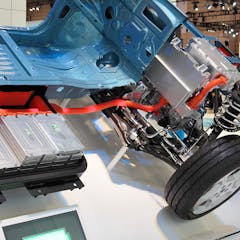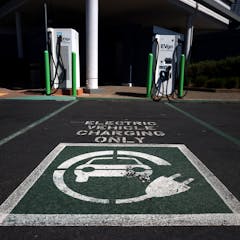
Articles on E-bikes
Displaying 1 - 20 of 35 articles

Male cyclists greatly outnumber female cyclists in Australia. New research points to ways to close the gap.

Low-income customers who qualify for subsidised rates are five times more likely to use shared e-scooters and e-bikes for daily travel. People with disabilities also value them.

Many incentive programs promote e-bike use, but they aren’t necessarily targeting the right people for the right reasons.

Lithium-ion battery fires are becoming increasingly common as electric vehicles spread, and are hard to extinguish. A new approach uses an electrolyte based on a commercial fire extinguisher.

Research shows that rain and hilly terrain doesn’t put people off e-bikes.

Electric vehicles get all the press – but it’s the smaller unsung two wheelers cutting oil demand the most.

Lithium-ion batteries power many electric cars, bikes and scooters. When they are damaged or overheated, they can ignite or explode. Four engineers explain how to handle these devices safely.

Brisbane was the first Australian city to accept rideshare e-scooters. After some growing pains, residents, visitors and the city itself are enjoying the benefits, a new study finds.

Early in the pandemic, when there was much less traffic on the roads, people took to their bikes. But since then, fewer people are cycling, with rates now lower than in 2011.

Canada should invest in sustainable transportation infrastructure to accelerate the green transition.

If the EV transition focuses exclusively on drivers in privately owned cars, it won’t meet many Americans’ mobility needs, particularly in underserved communities.

The Victorian government has announced it is replacing the state’s public transport ticketing system. So what essential features should a state-of-the-art system offer users?

The rise of e-commerce means billions of packages are delivered in the US each year. That creates traffic and pollution, but urban freight researchers are finding better way to get goods to customers.

Scooter share schemes actually become more popular in hot weather, as people turn to them to avoid breaking a sweat

Tackling climate change is a budget priority, but will we see the major investment in cycling infrastructure and public transport that is one obvious solution?

Electric cars are important - but we can now electrify all land-based transport, from buses to bikes to trucks. We need good policy settings.

Is it affordable? Is it safe? Here are some key things to consider if you’re considering buying one of these vehicles or using them in a share scheme.

A group of powerful countries have agreed ‘green corridors’ for emissions-free shipping by 2025, but that’s not even half the battle.

What will the US$1.2 trillion infrastructure bill pay for? Here are some of the things it will help build, fix or remove.

Electric bikes allow riders to go much further and faster in the countryside – and this has led to a lot of concern from mountain bikers.
